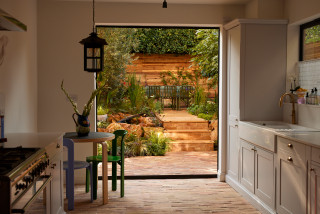
This article was originally published by a www.houzz.com . Read the Original article here. .

This article was originally published by a www.houzz.com . Read the Original article here. .
Designer Lionel Jadot at the What’s New? In Hospitality exhibit. Photo by Anne-Emmanuelle ThionDesigner of the Year In another sign revealing the importance of…
Kelsey Leigh Design Co.Save Photo5. Rift-Sawn White Oak Designer: Kelsey McGregor of Kelsey Leigh DesignLocation: Sarasota, Florida Homeowners’ request. “This house is situated right…
Kelsey Leigh Design Co.Save Photo5. Rift-Sawn White Oak Designer: Kelsey McGregor of Kelsey Leigh DesignLocation: Sarasota, Florida Homeowners’ request. “This house is situated right…
Crystal Kitchen + BathSave PhotoAfter: Maney stripped the kitchen and started from scratch. “We knocked it down to the studs and added new windows,”…
3. Purple Coneflower and Russian SagePurple coneflower and Russian sage make an all-star combination for late-summer and fall perennial beds. Purple coneflower (Echinacea purpurea,…
Few things can cure the post-summer-vacation blues like a relaxing soak in a bathtub. For the ultimate spa-like experience, you’ll want more than just…
“After” photographs by Bernardo GrijalvaBathroom at a GlanceWho lives here: A couple with two grown children and four grandchildren Location: Los Gatos, CaliforniaSize: About…
8. Light It RightLighting can make or break the mood in your kitchen, so it’s worth taking the time to get it right. A…
Highlights include: a bee-friendly, pink-flowering ornamental oregano (Origanum laevigatum ‘Herrenhausen’, USDA zones 5 to 9; find your zone); a low-growing rosemary (Rosmarinus officinalis ‘Prostratus’, zones 8 to 11); yellow-flowered yarrow (Achillea ‘Terracotta’, zones 3 to 8); thistle-like sea holly (Eryngium bourgatii, zones 5 to 8), and Latin American fleabane (Erigeron karvinskianus, Zone 6), which forms daisy-like flowers. “[Latin American] fleabanes are great filler plants and really help to pull a scheme together,” Clayton says. “They grow anywhere, bees love them and they flower nine months of the year, pretty much.”
Further back is purple-flowering ‘Rozanne’ cranesbill (Geranium ‘Rozanne’, zones 4 to 9) and Hart’s tongue fern (Asplenium scolopendrium, zones 5 to 9).
Amid the new foliage are existing shrubs and trees, including a large fig on the right and a Photinia that Clayton strategically reshaped. “The couple had quite a few large shrubs that were taking over the view and adding a lot of shade,” she says. “To be sustainable, we kept a lot of them but pruned them into multi-stems to make them lighter and also to let more daylight through. It’s nice, rather than just ripping everything out, and also gives you an opportunity to underplant them rather than just having dense shrubs,” the designer adds.
There was also an existing olive tree on the left. “The olive tree is massive,” Clayton says. “We love keeping bigger trees in the [landscape], and they give a sense of scale that helps to make a city garden feel more natural. I always think that going bigger with a couple of strong elements makes smaller spaces — weirdly — feel bigger.”
15 Ways to Create a Beautiful Water-Wise Landscape